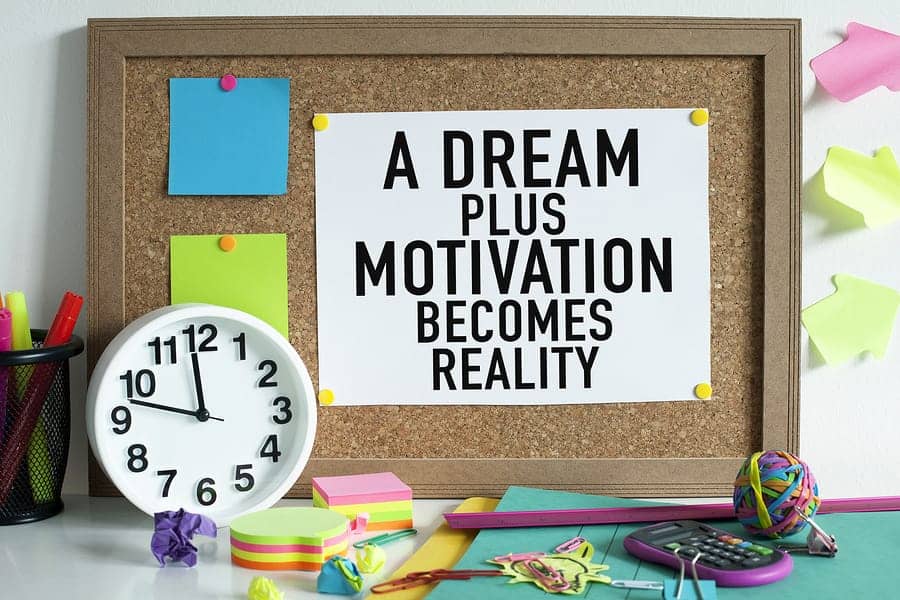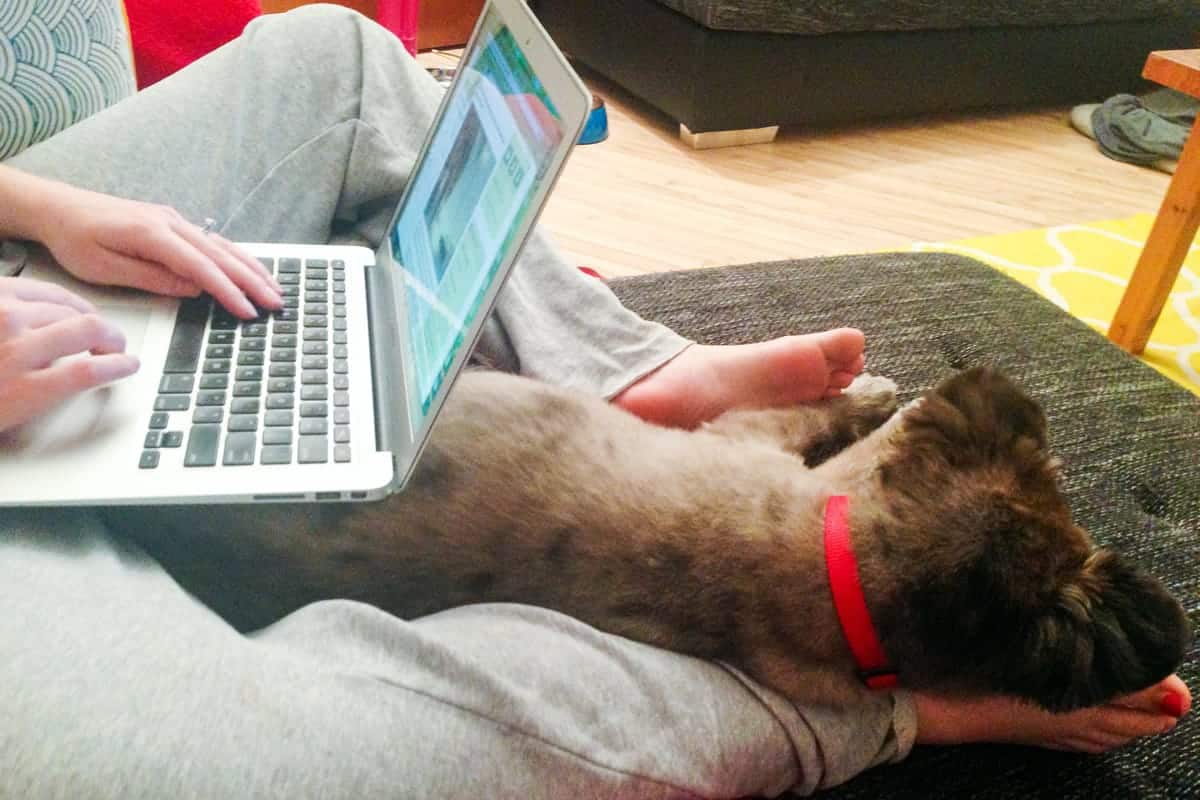All aspiring entrepreneurs are inspired by someone who forged a path before them. We all need someone to look up to — to think of during tough times and believe that one day, we could be where that person is.
There are plenty of people that could be debated as being the “most inspiring” (Mark Zuckerberg, Elon Musk, Jeff Bezos). But the truth is that each of these people can teach us different things because they’re all coming from different places — and we don’t mean their location.
Every person brings their own unique life experiences to the boardroom. No two people are exactly alike because our personalities affect the way we perceive experiences, in addition to how we react to them. The inspiring entrepreneurs on this list (which is by no means comprehensive) all have something unique to offer, but they also have one thing in common: they’re wildly successful.

Bill Gates
Bill Gates was born on October 28, 1955 in Seattle, Washington to a lawyer and an educator (who also just happened to serve on the board of IBM). From an early age, Gates was an extraordinarily avid reader, even sitting down to read the encyclopedia at times. When he grew bored at his local public school, his parents enrolled him in an exclusive private school, where his interest in computers blossomed.
The Mother’s Club at the school purchased a teletype terminal for the students to use, which Gates was drawn to immediately. He spent much of his spare time on the machine, even developing a tic-tac-toe program in BASIC computer language — around age 14. It’s also around this time that he met Paul Allen, his (very near future) business partner.
Gates and Allen became friends quickly, bonding over their shared fascination with computers. Being the mischievous (and brilliant) kids they were, they once had their computer privileges revoked when they realized there was a glitch in the software tracking computer time. As a result, they received free access to the computers from the supplier. They were allowed back into the lab when they promised to debug the software.
When Gates was 15 and Allen 17, the two developed their first computer program, which eventually netted the teens $20,000. Despite their desire to start a company immediately, Gates’ parents wanted him to go to college and become a lawyer. In 1973, Gates went to Harvard. Allen attended Washington State University, but dropped out after two years to take a job with Honeywell in Boston.
Shortly thereafter, Allen and Gates, having become fascinated with the Altair 8800 minicomputer kit, wrote to the maker of the device, Micro Instrumentation and Telemetry Systems (MITS). The duo claimed they were developing software that would run on the Altair. MITS asked them for a demonstration, which meant that the two had to work pretty hard to create something from nothing in two months.
Because they didn’t even have an Altair to test the software on, they went into the presentation completely blind. All laws of physics and karma would tell us this presentation should have been a disaster — but it wasn’t. The software worked perfectly. MITS offered Allen a job and Gates dropped out of Harvard to join him not long after.
In 1975, Gates and Allen founded Microsoft while working for MITS, but they didn’t see immediate success. Their software for Altair brought in some cash, although it did not cover expenses. In 1977, when MITS was sold to new owners, Gates and Allen had to sue for the rights to the software they’d developed for the Altair — something Gates felt very strongly about.
Gates saw a different opportunity in regards to software than many of his competitors and peers. In the late 70’s, it was common among computer enthusiasts to share software, but Gates believed that passing software between friends was basically stealing. He saw early on that there could be a lot of money in software licensing, so that’s where he focused his energy.

In 1979, Microsoft had 25 employees and was finally seeing some financial success — in the amount of $2.5 million. By 1981, the company saw exponential growth, with employees jumping to 128 and revenue exploding to $16 million. In 1983, Allen stepped back from Microsoft after a health scare, leaving the company in Gates’ capable hands.
In the meantime, Gates was staying true to his belief in software. He was hard at work developing Windows, which launched in November 1985. A few months later, he took Microsoft public. The initial public offering (IPO) of 24.7 million shares went for $21 per share and since Gates held 45 percent of it, he became a millionaire at the ripe old age of 31. Not too shabby for a college dropout, right?
Obviously, this was only the beginning for Microsoft. The company is still thriving and is worth billions. Gates stepped back from day-to-day operations in the year 2000 so he could focus on philanthropy, which his mother heavily instilled in him. His last full day at Microsoft was June 27, 2008 and he is now officially retired, but remains a board member.
What Makes Bill Gates One of the Most Inspiring Entrepreneurs
Bill Gates is an inspiring entrepreneur for many reasons, but perhaps the most pertinent is his drive. He had the intelligence to accomplish whatever he wanted, but without ambition and passion, intelligence gets you nowhere. If he would have finished Harvard Law like his parents wanted, he would’ve undoubtedly made a great lawyer, but his heart wouldn’t have been in it.
Gates is one of the most inspiring entrepreneurs for us because his success came from a mixture of hard work, natural intelligence, and a bit of luck. His mother’s seat on the IBM board provided some important connections early on in his career, but he never would have been able to build Microsoft had he not been eager to learn on his own — remember that he entered Harvard as a pre-law major. He quickly shifted focus though and enrolled in computer science courses because that’s where his passion was.
Gates loved working with computers and developing software. He was also motivated enough to see how these two things could change the world. He pushed through the setbacks and blazed the trail ahead because he believed in what he was doing — not unlike the other inspiring entrepreneurs on this list.
Steve Jobs
Steve Jobs was born on February 24, 1955 in San Francisco, California to two graduate students from the University of Washington. He was quickly adopted by Paul and Clara Jobs, who raised him in the region that would become known as Silicon Valley. Paul Jobs was a machinist and taught Steve how to take apart electronics and reassemble them, kickstarting his fascination with machines.
During elementary school, Jobs had trouble concentrating in class — not because he didn’t understand the material, but because (like Gates) he understood the material quickly and got bored. In fact, he tested so well that his teachers wanted to push him ahead at least one grade, but his parents resisted.
In high school, Jobs landed a summer internship at Hewlett-Packard after impressing William Hewlett, where he met Steve Wozniak. Jobs bonded with Wozniak over their mutual love of computer chips and mechanics, despite the five year age gap between the two.

Upon graduating from high school, Jobs enrolled in Reed College, where he lasted one semester before dropping out. However, he continued to informally take creative-based courses, later citing a calligraphy class he took as the reason he loved typography — an interest that eventually led to fonts becoming widely available to the public.
Jobs worked as a video game designer for Atari for a while and then decided to take some time to travel. Upon his return to Silicon Valley in 1975, he and Wozniak reconvened in the Jobs family garage — and Apple Computers was born. They literally sold possessions to raise the capital needed to build the Apple I, which eventually brought in enough revenue to fund design improvements.
In 1977, Jobs and Wozniak released the Apple II — the first computer with color graphics and a keyboard. The Apple II revolutionized the personal computer industry in more ways than one. Not only did they advance the technology in a way previously unseen (seriously, graphics in COLOR), but they made computers smaller, cheaper, and therefore, more accessible to the average person.
In 1980, Apple went public, raising millions of dollars. Jobs and Wozniak followed up with the Apple III and then the LISA, but not with nearly the success they’d seen with the Apple II. Lower sales meant Apple lost market share (and dominance) to IBM. They fought back in 1984 with the Apple Macintosh, the first computer operated by a mouse, but it was too expensive for the consumer market and not suitable for business needs.
In 1985, after failing to regain market share from IBM and missing the mark with the Macintosh, Jobs was pushed out of Apple by his own hires. While some may have licked their wounds alone in a dark room, Jobs went right back to work creating a new company, NeXT Computers, where he focused on creating software that could be widely used among consumers.
In 1986, Jobs purchased the Computer Graphics Division of Pixar Animation Studios from George Lucas. After years of hard work and a strategic partnership with Disney, Pixar was able to create the first computer generated animated movie — a little film called Toy Story. Riding on the coattails of Oscar nominations and massive ticket sales, Jobs made another million dollar decision by taking Pixar public in the largest IPO of 1995.
Shortly thereafter, Apple, which was floundering in terms of market share, purchased NeXT and reinstated Jobs. In 1997, he was renamed CEO and he wasted no time re-building his baby. Within two years, he’d turned the company around from posting hundreds of millions of dollars in losses to reporting billions in revenue and restored Apple’s reputation as an innovative company.
Of course, the innovation at Apple was far from over. Over the next fifteen years, Jobs helped develop incredible technology, such as the iPod (which completely changed the way we consume music), the revolutionary iPhone (it’s hard to think of our lives before smartphones), and the sleek iPad, essentially setting benchmarks for competitors with each new edition.
What Makes Steve Jobs One of the Most Inspiring Entrepreneurs
Steve Jobs landed on this list of inspiring entrepreneurs because of his laser-like focus. Even after he was fired from Apple in 1985, he started a new company to keep developing his ideas of functional personal computers and the software that ran them. Jobs kept his eyes on the prize even when circumstances felt impossible or at the very least, improbable.
Focus was a huge part of Jobs’ personality and something he instilled in Apple employees when he returned in the late 90s. They were developing dozens of products, but he forced them to abandon all projects except for four that would fit into four categories: pro desktop, pro portable, consumer desktop, and consumer portable.
At Apple’s annual retreat, he would have the 100 invitees come up with a list of ten things they wanted to focus on in the coming year. Once they’d all agreed upon the top ten (in order) he would cross off the bottom seven and tell them they could only do those three.
Jobs believed that focus was what kept companies on track. What was the point of having 10 products if they were all just “okay” when you could have five that were really innovative and life-changing? There are only 24 hours in a day, so take some inspiring advice from Jobs and use them to be really focused on what your goals are.

Richard Branson
Richard Branson was born in London, England on July 18, 1950 to a barrister and a flight attendant. He struggled in school as a child and eventually dropped out at the age of 16 to start his own magazine. The publication wasn’t very lucrative and in an effort to fund it, he started selling records through the mail.
When the mail-order record business took off, Branson rented a brick-and-mortar location in London and started selling records in-store with the help of his magazine employees. They named it “Virgin” because none of them were experienced business-people.
In 1973, Branson created a record label called Virgin Records with its first release being Mike Oldfield’s “Tubular Bells.” But the label really took off in 1977 when Branson signed the Sex Pistols to Virgin (against most people’s strong advice). Virgin grew to become one of the world’s most successful independent record labels, landing artists such as Peter Gabriel, The Rolling Stones, and Paula Abdul.
Over the following decade, Branson diversified the Virgin brand, eventually encompassing more than 50 companies and generating millions in revenue. In 1984, he expanded even further, founding Virgin Atlantic — a brand new international airline that he said would not ignore customers’ needs the way other airlines had done.
At first, it appeared that everything was fine. Virgin Atlantic was doing well and people did, indeed, love flying with them, thanks to excellent customer service and incomparable perks. But in the 90’s, fuel prices soared, fewer travelers were flying overseas, and competitors were on a mission to put Virgin Atlantic under.
In 1992, Branson had to sell off Virgin Records to pay Virgin Atlantic’s debts and keep it afloat — something that devastated him. He promised himself he’d never be at the mercy of lenders ever again, which led to a highly successful strategy he calls “branded venture capital.” This basically entails the licensing of the Virgin name (and the full weight behind it) in exchange for a controlling interest.
These days, Branson’s sights are set on space travel, via Virgin Galactic. While some people might look at his latest venture (or any of his others) and think he’s insane, it isn’t a far jump from Virgin Atlantic, especially when you consider his adventurous nature and desire to challenge himself.
What Makes Richard Branson One of the Most Inspiring Entrepreneurs
Richard Branson is a different kind of inspiring entrepreneur. He built a diversified empire of businesses under the same brand name and when asked why he did so, he said that he enjoyed the challenge of doing things better than others. His contributions to entrepreneurship and his pioneering way of overcoming obstacles even earned him a knighthood.
The lesson we can learn from Branson is the importance of stellar customer service. He believes customer service makes a business, regardless of the product or service you are trying to sell. He says the hype and amenities of Virgin Atlantic made people want to try the airline, but it was the interactions with Virgin employees that kept them coming back. Not only do you get excellent customer service on the plane, but this practice extends to social media, with multiple full-time employees responding to tweets 24 hours a day, 7 days a week.

Branson is one of the most inspiring entrepreneurs because he believed that employees were his biggest asset long before management schools were teaching it. He knew you couldn’t have great customer service without the right employees — and Virgin Atlantic hires selectively because of this philosophy (a reported 1 in 100 applicants is hired). Take this lesson and run with it.
Mark Cuban
Mark Cuban was born on July 31, 1958 to a decidedly middle-class family in Pittsburgh, Pennsylvania. His father upholstered cars and his mother did odd jobs to earn extra money. Always performing well in school, he began taking college courses at the University of Pittsburgh during his junior year, even skipping senior year to start college full-time.
His first business (of many) was selling baseball cards at age ten. From there, he looked for opportunities to earn money any way he could, like selling garbage bags, coins, and stamps. Cuban attributes at least some of his ambition to his parents, who incentivized him to read by paying him to do so — say, $2.00 per 100 pages — causing him to get up early to read before school in the morning.
His ambitious find-a-way attitude got him through college (first at Pitt, then at Indiana University), which he helped pay for through a variety of entrepreneurial ventures, including teaching dance lessons.
After college, he worked for Mellon Bank in Pittsburgh right as they were converting their records to computers, a task that sparked his interest in PCs and programming. After a brief stint back in Indiana, he drove to Dallas in his beat up 1977 Fiat X19 to live with five friends in a tiny apartment and sleep on the floor.
Cuban worked at a bar while applying for jobs, landing one at a place called Your Business Software. In his words, they hired him because they were “impressed by the fact that I was actually willing to read all of the software manuals” and that he was teaching himself programming.
He enjoyed the job and was even making a little money. When he got a big sale a few months in, he was thrilled at the idea of buying a bed and getting his own apartment. However, his boss told him to turn down the sale. Cuban went to pick up the check from the client anyway and when he brought it back to the CEO, was fired immediately.

Being fired was what Cuban needed to kick-start his career. This is the event that made him go into business for himself. He founded MicroSolutions, which sold software, configured computers, and conducted training. Through some strategic decision making (as if there were any other kind for inspiring entrepreneurs), MicroSolutions grew to be a multi-million dollar business, which he sold for a hefty sum a few years later to CompuServe.
Seeing the vast potential of the Internet and using his profit from the CompuServe sale, he and fellow Indiana University alumni Todd Wagner founded AudioNet (later Broadcast.com) as a way to listen to sports radio online. After renaming the company and taking it public in 1998, Cuban and Wagner set their sights on selling their extremely valuable company — which they did — to Yahoo! for nearly $6 billion the following year.
Much like Gates and Branson, Cuban has spent the past decade or so taking on projects and businesses he wants to. After all, he doesn’t need to work, but he’s an entrepreneur. He chooses to work. In 2000, he purchased the Dallas Mavericks and pulled them from the depths of the NBA rankings to champions in 2011. In 2009, he joined a group of venture capitalists to create the Emmy award winning reality show Shark Tank, which is still running today.
What Makes Mark Cuban One of the Most Inspiring Entrepreneurs
Mark Cuban earned a spot on this list of inspiring entrepreneurs because of his vision, but also for following his gut. In the 1980’s, when computers were just beginning to enter the minds of the masses, he dedicated his life to learning everything he could about them and then put that knowledge to good use.
In the 90’s when the Internet was in its infancy, he was starting a business that allowed people to listen to the radio online. Cuban knew the Internet would change the world and he wanted to be a part of it in a meaningful way. The lesson he teaches us here is that you have to take the bull by the horns. If you see an opportunity, seize it.
Instead of retiring early, Cuban is working to inspire other entrepreneurs on Shark Tank and is even helping them learn how to better conduct their businesses. It doesn’t appear that Cuban will be slowing down anytime soon — and we certainly hope not. His outspoken nature and good instincts make him an interesting case study that we are eager to continue following.
How to Turn the Most Inspiring Moments Into Action
Being inspired by someone doesn’t necessarily lend itself to taking action. Seeing that Bill Gates worked hard doesn’t mean that you will, too. Instead, look at the specific things each entrepreneur did on their journey to success and then follow suit.

For example, Bill Gates read everything he could get his hands on and took a vested interest in educating himself. In fact, Gates is among great company here — reading is a common practice among many inspiring entrepreneurs.
Richard Branson made his own luck and opportunities, eventually doing what most people thought was impossible: running an airline with stellar customer service. Steve Jobs had focus like very few others and used it to narrow product offerings, which eventually saved Apple from going under.
Entrepreneurs are sometimes described as crazy, either because their idea is outlandish or because their methods are unorthodox. So when people tell you you’re nuts, think about all of the crazy ones that came before you. Think about the people on this list (and others) who didn’t listen to the naysayers — and how they impacted your life.
Recently, two Grammy winners stood onstage in their underwear and said, “Anyone, from anywhere, can do anything.” You don’t have to be from a big city or a rich family. You really can accomplish anything you set your mind to. That’s what all the people on this list did — they followed their passion and took active steps to get there. So who’s to say you can’t accomplish your wildest dreams?
Proto.io lets anyone build mobile app prototypes that feel real. No coding or design skills required. Bring your ideas to life quickly! Sign up for a free 15-day trial of Proto.io today and get started on your next mobile app design.
Who are the most inspiring entrepreneurs in your eyes? Let us know by tweeting us @Protoio!





